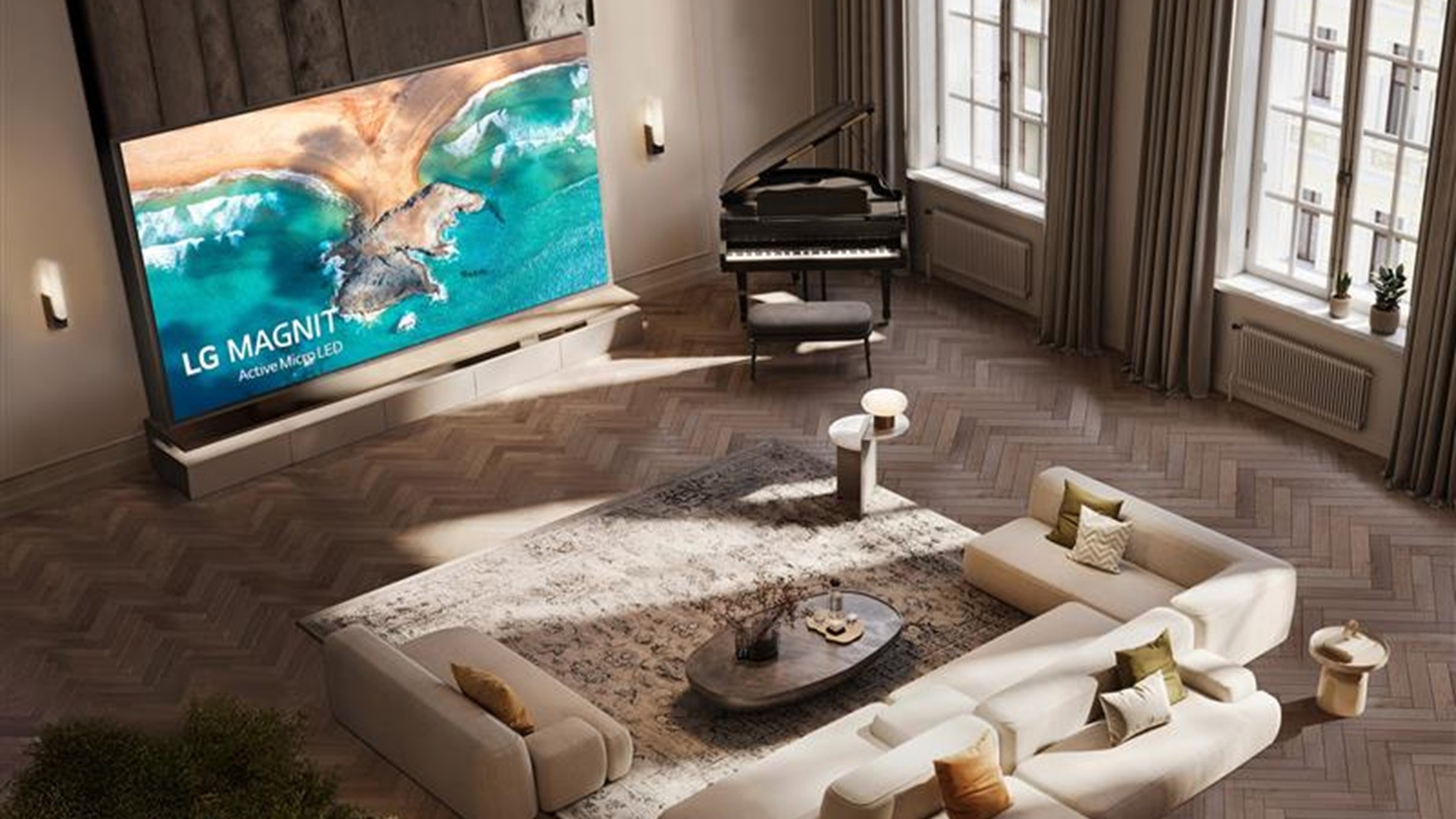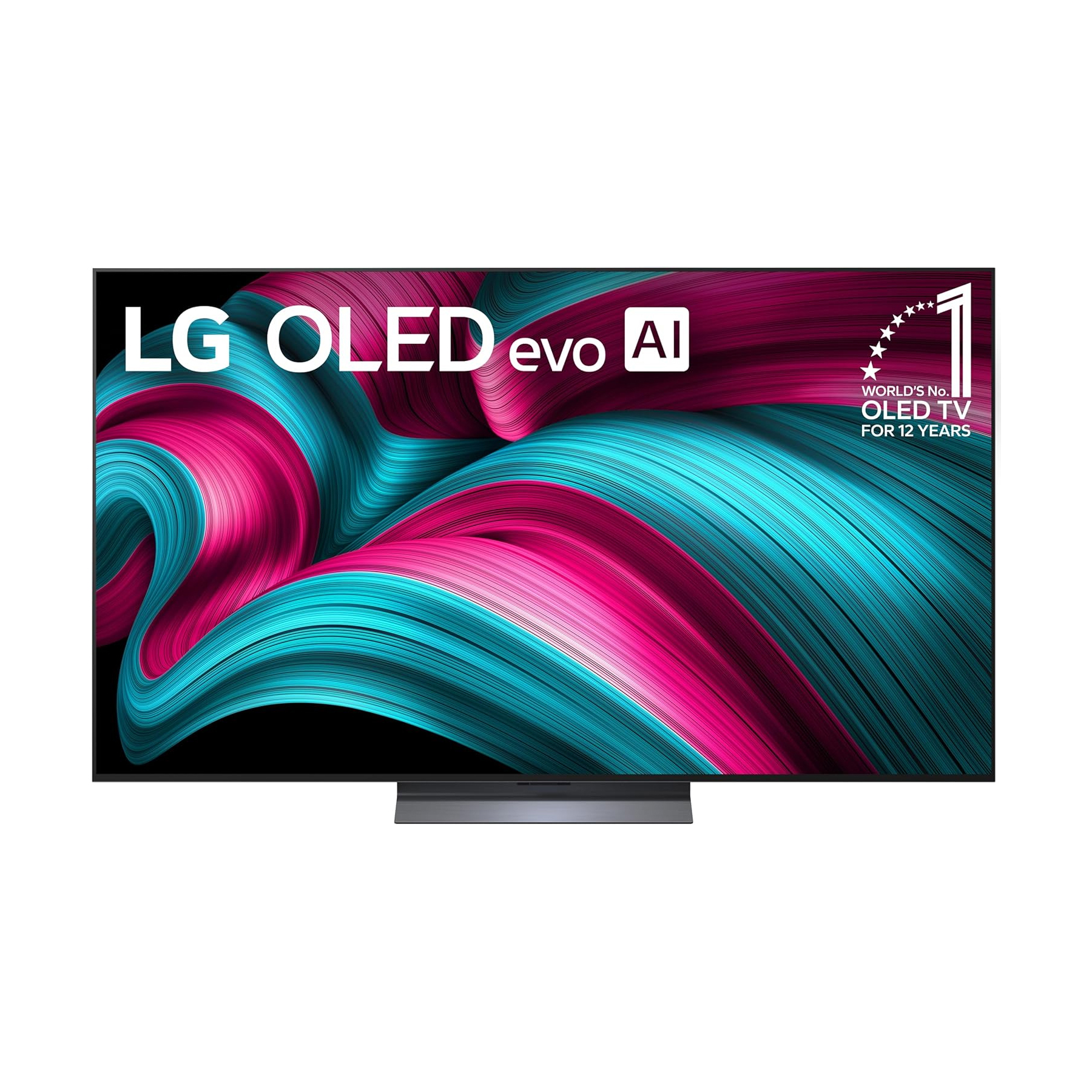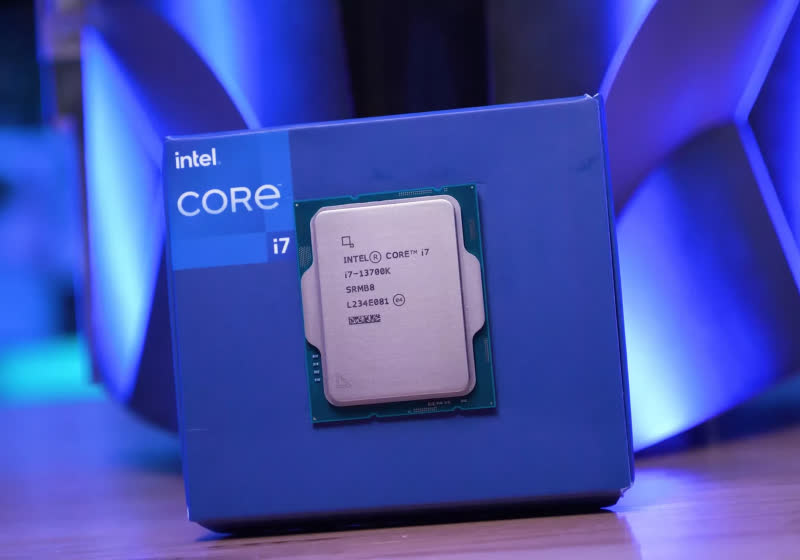LG Electronics has launched the LG Magnit Active Micro LED, a 136-inch (approximately 3 meters wide and 1.7 meters tall) display designed to compete with Samsung and other brands in the home micro-LED video wall market.
LG’s gargantuan new micro-LED TV uses active matrix technology. This enables individual pixels in the display to generate their own light, providing an advantage over passive matrix displays that control pixels by addressing rows and columns, according to LG.
Another benefit of LG’s Active Micro LED is a proprietary surface treatment that deepens black levels while minimizing reflections, resulting in accurate color and powerful contrast (the company specifies a contrast ratio of 1,000,000:1). The display itself is modular, with precise alignment between the individual panels to minimize gaps and create a seamless surface.
LG’s Active Micro LED is currently available in Korea, and availability will soon expand to North America and other markets.
micro-LED is a marvel, but projection is better for now

LG’s new video wall is an impressive technology statement, but for my money, traditional projection tech remains the superior home theater option.
The main reason: money. LG’s press release for the Magnit Active Micro LED doesn’t mention a price, and that’s because if you have to ask, you can’t afford it. Video walls like this that use micro-LED tech cost well into the $200,000-plus range, and there’s been no indication that prices will drop in the near future.
Projectors, on the other hand, are a comparatively affordable home theater display option. The best projectors, such as the JVC DLA-NZ800, are priced under $20,000. The NZ800 can’t compete with micro-LED displays like the LG Magnit when it comes to picture brightness, but it has powerful contrast (JVC specifies the NZ800’s native contrast at 100,000:1) along with advanced HDR processing and 8K display and upscaling. I’ve seen the NZ800 in action several times, and I’m continually gobsmacked by its stunning picture quality.
The JVC DLA-NZ800, which can beam images as large as 150 inches diagonal, might require a dark room to deliver its highest level of performance, but isn’t a dark room what home theater is all about? Movie theaters are dark, and no one seems to have a problem watching movies in a setting with the lights out.
A micro-LED video wall like the LG Magnit makes the most sense for viewing in bright rooms, where the display’s high brightness and contrast, along with the Magnit’s wide viewing angle, are a perfect combination for sports viewing. And with a screen that’s 3 meters wide and 1.7 meters tall, you could watch multiple games onscreen at once using a display splitter, and the Magnit’s high refresh rate would help to ensure that the motion during plays looks crisp.
A new breed of super-bright projectors, such as the Epson QL7000, is also a great option for sports viewing. At $32,999, the QL7000 is at the high end of the projector price range, but its 10,000-lumen specified brightness is plenty for daytime, bright room viewing, and it can beam images as large as 300 inches.
At the end of the day, projection tech wins this race by providing a significantly cheaper big-screen home theater display option than micro-LED. I look forward to a day when micro-LED pricing becomes more mainstream, but I’m not holding my breath for that to happen any time soon.

Follow TechRadar on Google News and add us as a preferred source to get our expert news, reviews, and opinion in your feeds. Make sure to click the Follow button!
And of course you can also follow TechRadar on TikTok for news, reviews, unboxings in video form, and get regular updates from us on WhatsApp too.










 English (US) ·
English (US) ·